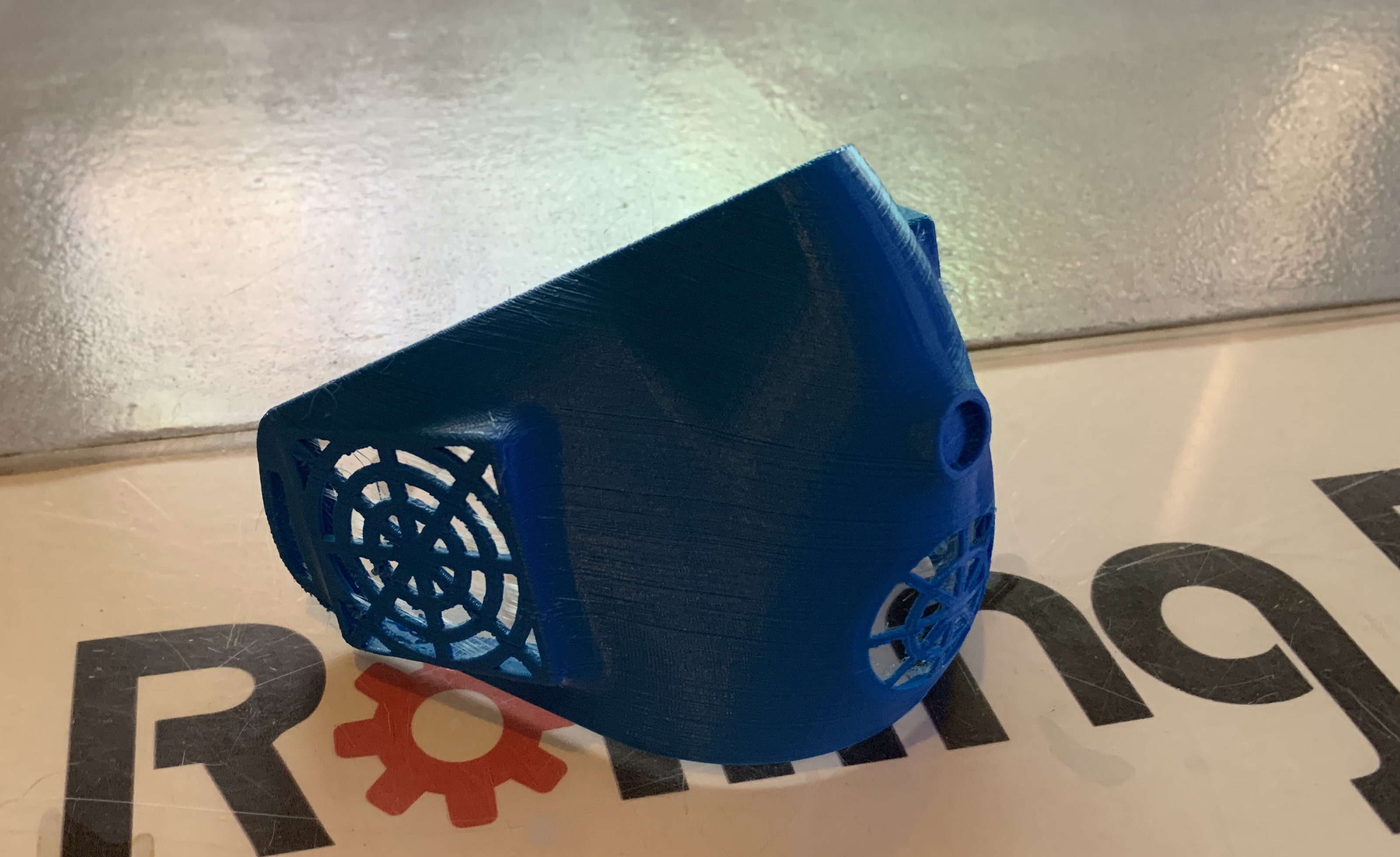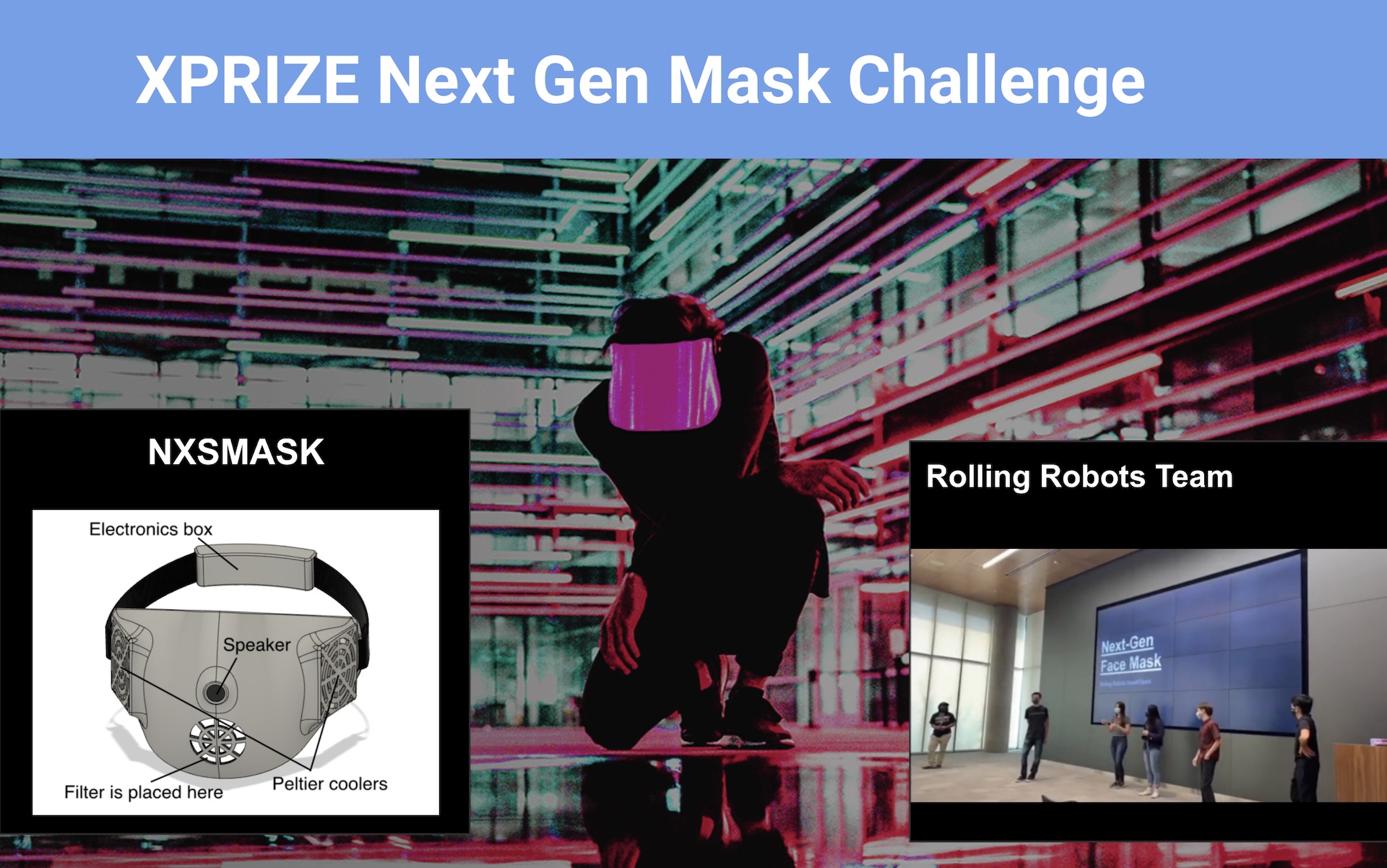XPRIZE NEXT GEN Mask Challenge Top 25
Rolling Robots students frequently tackle engineering challenges that are interesting and cutting-edge. In late September, a team of young inventors added “important” to that list, when its design for an improved face mask was selected to compete for a $1 million prize—and a chance to bring their invention to life.
Team Rolling Robots was among the 25 teams selected to move into the second round of the XPRIZE Next-Gen Mask Challenge. This challenge asks young adults to “reimagine protective face masks used to stop the spread of COVID-19 by making them more comfortable, functional, accessible, and even stylish.” XPRIZE—a nonprofit organization that runs competitions designed to improve the world through technology—required its teams to achieve the same filtration as a surgical mask, but overcome the top five barriers to mask-wearing, as determined by a consumer survey.
According to team member Samantha, the team found the competition after deciding to tackle face masks as its next engineering challenge.
The students were already meeting weekly learning to invent, following the JV InvenTeam Curriculum of the Lemelson-MIT program so they knew how to solve problems.
“We were making a list of all the stuff that we use in our daily lives and then seeing what problems they had,” says Samantha. “And since we’re in COVID right now, one of the biggest problems we found with a face mask, which we pretty much use every day, is that they’re uncomfortable and they’re hot.”
Rolling Robots co-founder Bing Jiang introduced the XPRIZE competition to the team, and they were off.
Making Masks Appealing
There was no shortage of ideas.
“We had experience with like other things like Arduinos, Peltier coolers, all those kind of [things],” says team member Annie. “So we had not a lot of trouble coming up with ideas and thinking of ways to actually make them come true.”
In fact, Annie says the bigger engineering problem was practical: deciding where to place the features they wanted, and how to balance those features with the need to hold down the mask’s weight.
In the end, the team came up with a design that addresses several problems: heat, glasses fog, comfort, ease of conversation, and even looks. Their mask design—brought to life by team member Eli using computer-assisted design software—includes a Peltier cooler on each cheek; a silicone lining for comfort and to prevent contamination from escaping or entering; a space for a disposable filter; a flexible plastic outer layer that can be drawn or painted on; and a microphone and speaker connected to Bluetooth, which communicates with the wearer’s smartphone to transcribe the speech into text. In this way, their design also accommodates Deaf and hard of hearing people.
Presentation at UCLA
The team presented their ideas to the Infectious Disease Laboratory at the Lundquist Institute. This young team made a professional presentation and gained valuable feedback on their design. The team also had the chance to tour the facility and hear the history of infectious disease research at the institute.
Team member Victoria created an animated video showcasing all the design choices and features. Combining this with the materials form the UCLA presentation the team had their video submission for the challenge.
Team member Matthew is particularly proud of the coolers—which double as heaters, a consideration that may be important as winter approaches.
“They’re incredibly lightweight, very cheap,” says Matthew. “If you want them to heat, you just put electricity in. If you want them to cool, you just reverse the current.”
Working Toward Round Two
Being selected to continue in the XPRIZE competition means the Rolling Robots team will need to dive in to the specifics: which parts they’re using and how to solve certain problems that they didn’t need to address during the first round. They’ll also get to 3D print one or more prototypes.
Best of all, they will get access to help from an array of XPRIZE’s corporate partners, who have promised materials and guidance to the 25 selected teams.
“I think one cool aspect would be that we're actually going to be able to use these Lydall filters, which are usually just reserved for frontline workers,” says Annie. “So we'll get to see how compatible they are.”
All of this is happening on a short timeline—there’s a month between the announcement of the first-round picks on September 23 and the announcement of the semifinalists on October 23. But these are seasoned inventors and competitors—and with a $1 million prize, plus the chance to make and market their prototype, they’ve got plenty of incentive. Watch this space!
For more information and to support the team visit our GoFundme page
Progress Updates
Meet The Team
First Custom Mask is Printed

Here is the first custom mask that was printed. This one is hard plastic just for sizing up the design tools.




